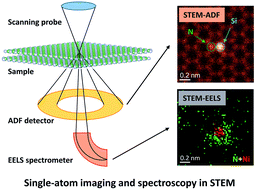Single-atom electron microscopy for energy-related nanomaterials
Abstract
The development of the aberration correction technique has enabled atomic resolution imaging in scanning transmission electron microscopy (STEM) under low accelerating voltages and pushed the detection limit of STEM-based imaging and spectroscopy analysis down to the single-atom level. The so-called “single-atom electron microscopy” brings new opportunities to study the structure–property relationship in energy-related nanomaterials at the atomic scale. In this review, we will firstly summarize some recent advances in low-voltage STEM imaging and spectroscopy with single-atom sensitivity, including emerging techniques such as STEM-DPC imaging and in situ STEM, by using two-dimensional (2D) materials as model systems. We will then discuss the application of these single-atom electron microscopy techniques to more complex energy materials via specific examples. These powerful and comprehensive capabilities of aberration-corrected STEM with single-atom sensitivity have proven to be invaluable for unveiling the origins of functionalities of energy-related nanomaterials and guiding the design of novel materials with desired performance.

- This article is part of the themed collections: Journal of Materials Chemistry A Recent Review Articles and Journal of Materials Chemistry A Emerging Investigators


 Please wait while we load your content...
Please wait while we load your content...